Mobilization
Twelve Endurance 17 team members, led by Chief Scientist Jonathan Fram, met in the early morning darkness at Oregon State University’s Ocean Observing Center in Corvallis for the hour-long drive to the NOAA Marine Operations Center in Newport. There, they disembarked and took the last of three COVID test leading up the expedition aboard the R/V Thomas G. Thompson, which most of them would call home for the next 17 days. The team will take COVID tests twice daily for five days before being allowed to go mask free inside of the ship.
The team claimed space for their work within the main laboratory, then quickly congregated on the stern deck to begin the long and arduous task of moving heavy ocean observing equipment from shoreside, onto the deck, and securing it to ensure it would remain in place for the expedition. A crane was used to lift, for example, coastal surface buoys that weigh some 4x tons from the pier to the rear starboard quarter of the ship’s back deck. It was a precision dance — the crane providing the gentle movement, and team members using tag lines to guide the movement’s direction and pace.
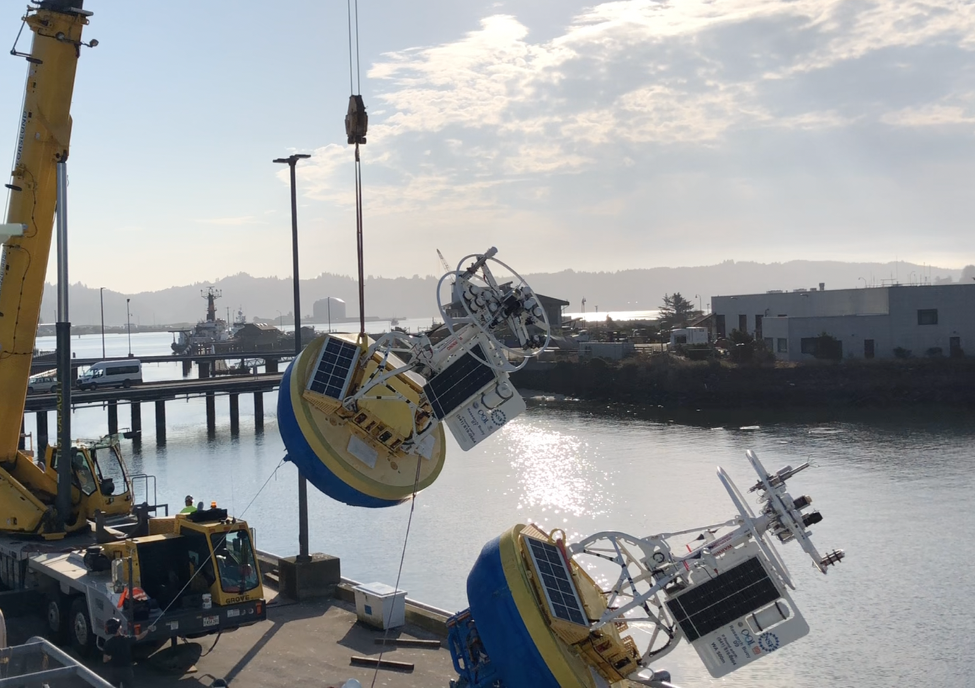
The Washington Shelf and Offshore Moorings are carefully moved from the pier to be secured on the stern of the R/V Thomas G. Thompson.
Two coastal buoys (Washington Shelf Surface and Offshore moorings) were only the beginning, however. Because of their size, they were positioned in place to allow remaining space to be filled with the rest of the mooring components. The components are many and ranged from “dumb” anchors, multi-function nodes (instrumented and powered anchors), two coastal surface piercing profilers (CSPPs), gliders, stretch hoses, floats, and the rest of the components that comprise the moorings.
The Coastal Endurance Array is made up of two cross-shelf moored array lines. The Oregon Line, off the coast of Newport, Oregon, is located at 44° 35’N, from 125°W to coast. The Washington Line, off Grays Harbor Washington, is located at 47oN, from 125oW to the coast. Gliders move and collect data around, along, and between these lines. Leg 1 of the expedition will recover and replace the mooring components of the Washington Line. The second leg will recover and deploy the Oregon Line.
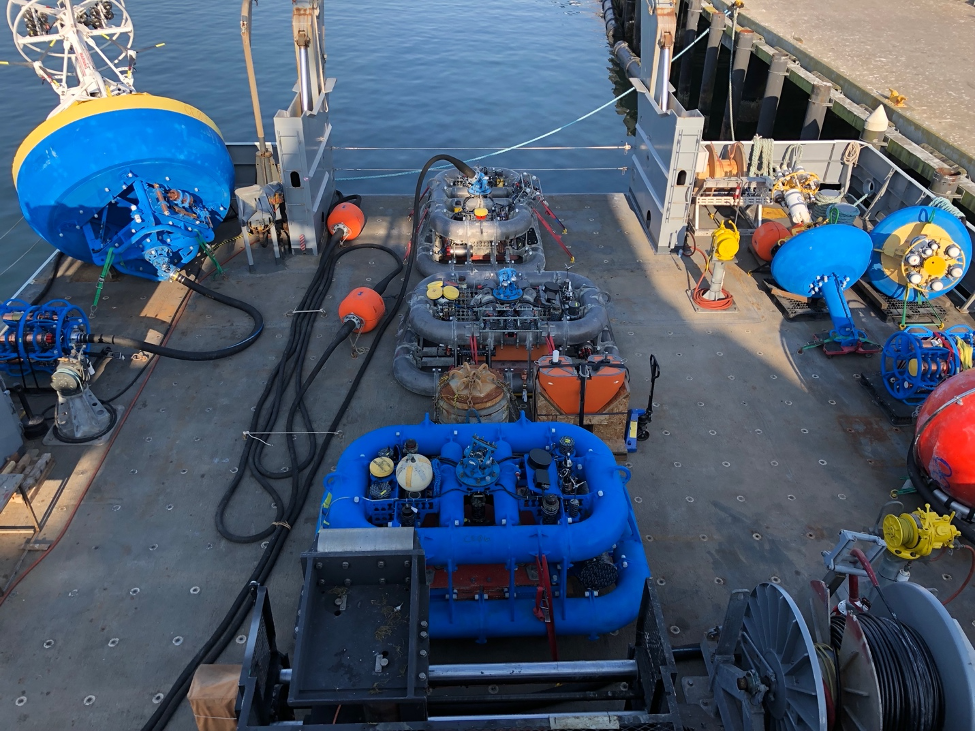
The aft deck is outfitted with tie-off holes that allow the various pieces of equipment to be secured to the deck with bolts and ratchet lines.
Once the pieces were in place, the team commenced building the moorings and ensuring all equipment was ready for deployment. The ship is set to depart on Wednesday September 21. During the daylong transit to the Washington Line, the team will deploy and recover gliders that continuously collect data in the water column between and beyond the mooring lines. On Thursday, September 22, the team will begin the recovery and deployment of the Washington Shelf Surface Mooring.
It takes a village
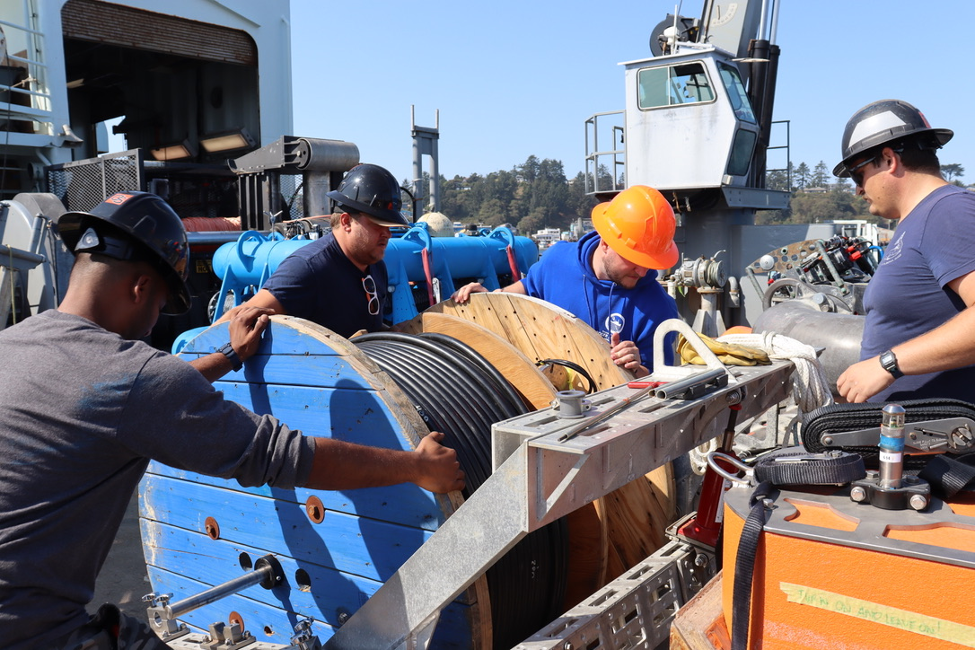
Technicians from left Akhil Salim, Jeffrey Wood, Oklahoma University Graduate Student Trenity Ford, and Linus Stoltz secure in place a thousand+ pound spool of wire that will provide power to the instruments on the array.
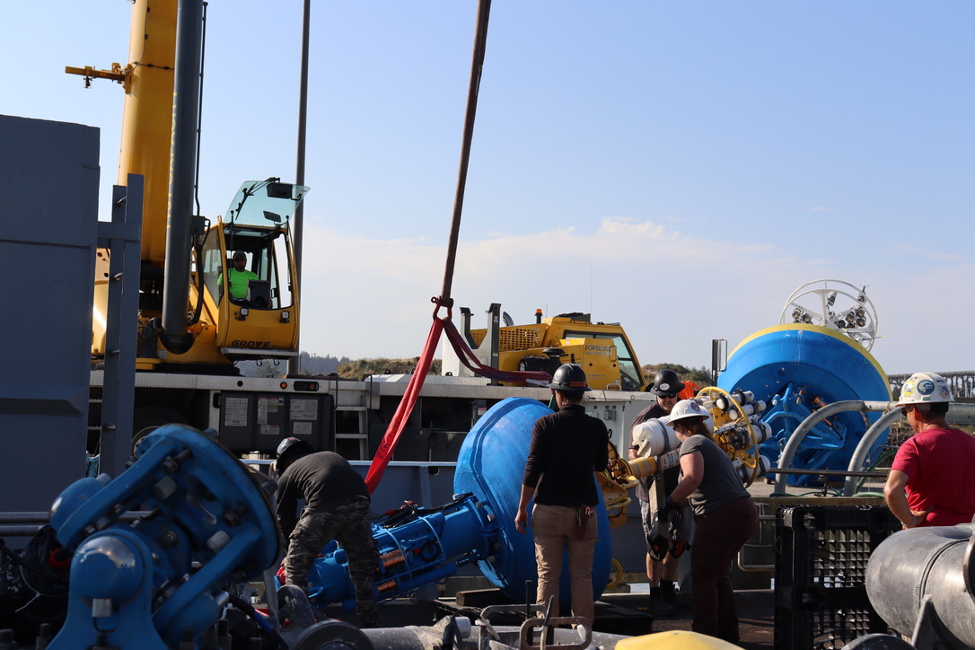
The team gets to work securing an inshore submersible surface buoy as it is laid down on the aft stern.
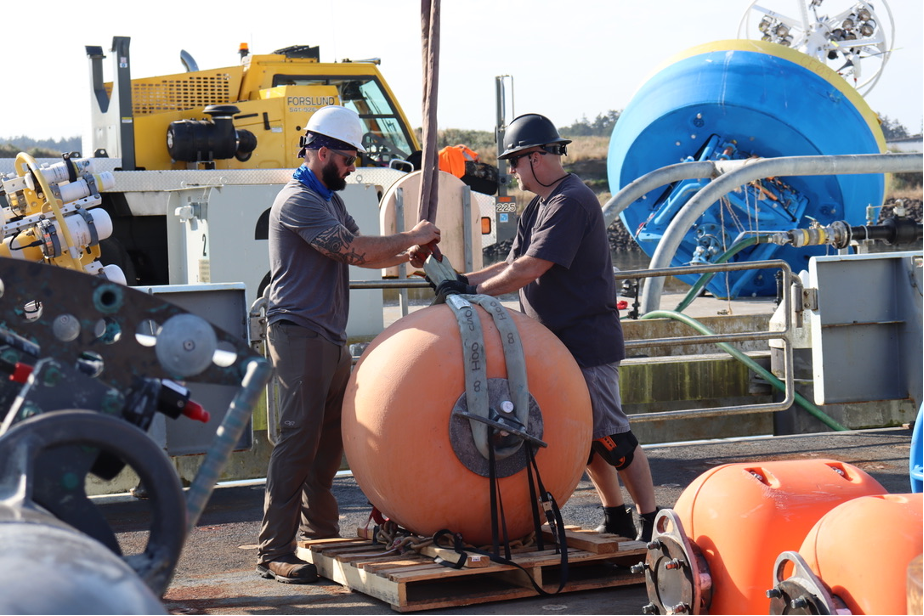
Crew member Dave Stanford and Endurance Data Lead Chris Wingard secure a Buoyancy Recovery Ball, which provides tension to the line above and below the acoustic release used to recover the mace anchor pictured below.

The aft deck is designed with holes and grips to allow for secure fastening of heavy, bulky equipment. Above is a 7000 lbs. mace anchor and a lowering release.